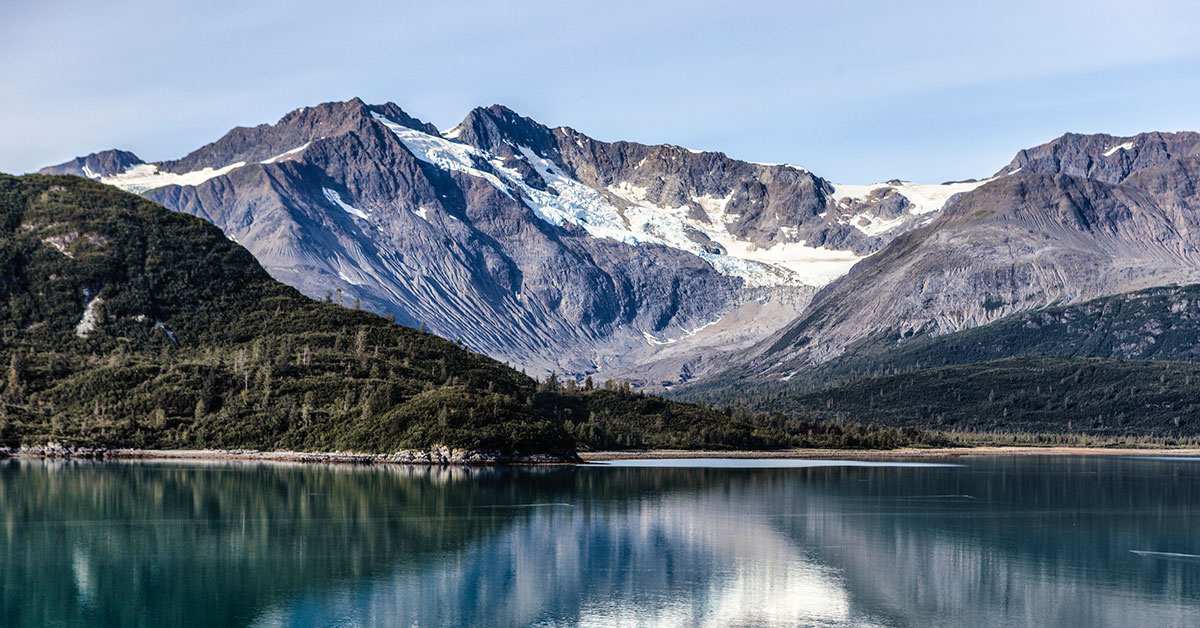
Here’s Why Alaska May Be the Next Frontier for Homeowners
Alaska Isn’t Only Offering Stunning Views to Homebuyers — It’s Also Increasingly Environmentally Conscious with a Booming Economy
Alaska’s dedicated environmentalists are changing the game when it comes to their home state’s future. The gorgeous Frontier State’s upcoming years are looking bright, both literally and figuratively. Between the growing business of solar energy, the development of viable ocean businesses, wildlife and public land protection, a high median household income, and a community that doesn’t hesitate to lend a helping hand, Alaska could be the perfect place to call home. If you’ve ever caught yourself daydreaming of enjoying a morning cup of coffee surrounded by mountain peaks and rivers–look no further than the Land of the Midnight Sun when purchasing your next home.
During the winter months, energy bills can certainly be high in Alaska, but there’s a reason this state is often referred to as the Land of the Midnight Sun; during the Spring and Summer months, Alaska receives more sunlight than any other state and most areas in the world. In the State’s most northern areas, like Barrow, for example, the sun doesn’t set for nearly three months.
Both the University of Alaska Center for Economic Development and the University of Alaska Anchorage Business Enterprise Institute report that renewable technologies that are profligate in the Lower 48 often make financial sense in Alaska, and solar power falls into that category. Alaska Center for Energy and Power research professor Dr. Erin Whitney explains, “A lot of people think solar power and Alaska, or anywhere in the Arctic, don’t go together, but the truth of the matter is, we do have a viable solar resource up here.” The many misconceptions aren’t surprising, considering Alaska sits on the Arctic it’s fair to assume sunlight isn’t a common visitor to the state. Although, through proper education, these fallacies about solar energy can be resolved. There are more than twelve hours of daylight between Spring and Fall, which surely surpasses what many would estimate.
The founder and CEO of Arctic Solar Ventures, Stephen Trimble, states “In the winter, production in December and January is only about 10 percent of a peak summer month, and that also happens to be the time we have snow on our rooftops as well…so what you lose by snow coverage isn’t a lot,” making this a really beneficial energy solution. The business of solar energy is rapidly gaining popularity all over the world, and Alaska is following suit. Within just the last couple of years, Alaska has seen a huge increase in solar panel installation requests.
A huge source of the state’s economy is built around oceans, which comes as no surprise. Alaska has more coastline than all of the U.S. states’ combined, approximately 6,640 miles, which doesn’t even include the Aleutian Islands that bring the total to over 47,000 miles of coastline. This easy access to the oceans has helped to build the Alaskan economy. You can thank Alaskan fisherman for your salmon dinners, as they provide nearly two-thirds of the nation’s annual seafood harvest. This year is off to a good start says Doug Bowen of Alaska Boats and Permits, who shares that they’re as busy as they’ve ever been in the last 20 years and that “boat sales are doing well and between IFQs and permit sales, we’ve got a busy year going.” The forecast this year is over 213 million fish, an 85% increase over 2018, which explains the increase in salmon permits.
Experts believe the blue economy is the future of Alaska’s economic stability, and active groups such as the Alaska Ocean Cluster, are pushing to inform Alaskans of the many resources available in their state. One program they offer, OTIS, brings together 20 Alaskans with differing experiences and expertise to determine challenges in ocean industries, brainstorm solutions, and then develop a product that addresses that challenge. As Alaska transitions from primarily exporting natural resources and raw goods to the development of viable ocean businesses, the state’s economy will flourish. Booming industries such as coastal tourism and energy are settled in place, but the potential for advancing mariculture, marine biotechnology, and other ocean industries is overwhelming.

The beauty of Alaska stays intact thanks to various organizations that are dedicated to preserving wildlife and protecting lands and waters. Alaska contains 365.5 million acres of land and 28.8 million acres of waters. Currently, around 88% of the state is in public ownership and many of said areas are untouched to protect their natural features including fish and wildlife habitats. These protected lands and waters also provide freedom for hunting, trapping, fishing, gathering wild resources, photography, and help to preserve Alaska’s lifestyles and economic opportunities.
Witnessing the genuine commitment from conservationists and the community is powerful and truly shows the heart of Alaska. To live in a society that has so much pride and respect for their land, with no selfish agenda, is extremely refreshing. There are citywide cleanup weeks compiled entirely of volunteers. The Anchorage Chamber of Commerce has been sponsoring Annual Cleanup Week for 51 years and has collected millions of pounds of trash from roadways, creeks, and neighborhoods. After the hard work is done, the friendliness of Anchorage residents shines with celebratory picnics and barbecues.
The driven residents of Alaska hold a median household income of $73,181 as of 2017, ranking one of the highest in the country. The state also ranks number 2 in the 2019 Best States rankings for its Gini index, in other words, Alaska has some of the strongest income equality among households. The oil industry accounts for more than 110,000 jobs, which is ⅓ of Alaska jobs. The industry also accounts for around ½ of the overall economy when the spending of state revenues from oil production is factored in. Essentially, without oil, Alaska’s economy would be cut in half. Other industries that are runner up to oil and gas are tourism (attracting over 1.1 million visitors annually), fishing, timber, mining, and agriculture; a little something for everyone. In addition to thriving industries, some Alaskan areas have extremely diverse populations. For example, a northeast Anchorage neighborhood Mountain View has the most diverse census tract in all of America according to University of Alaska sociology professor Chad Farrell.

With a driven, spirited, and self-motivated public, Alaska is the ideal place to settle down and buy a home. If you pride yourself in your home, family, and wellbeing, the Last Frontier may be calling your name. Simplify your life by neighboring yourself with surreal sights, the finest seafood, endless outdoor activities, the Northern Lights, and maybe you’ll even get behind the muktuk and akutaq delicacies. Being outside and breathing in the fresh air is a cultural precedence in Alaska, and who can’t get behind that mantra?
Alaska may be the only state in the U.S that allows you to explore where no human foot has touched before, climb unscathed mountains, and see glaciers bigger than most states. There’s no chance you’ll ever get bored, considering Texas could fit inside Alaska twice, there will always be new areas to delve into and friendly hands to shake. Whether you’re planning to invest in your first home or third, take a trip to Alaska and you most likely won’t need a return ticket.
Time to Focus on Affordable Housing
Taxes on real estate are not the answer. Sign the petition calling on Congress to address our country’s housing shortage.





